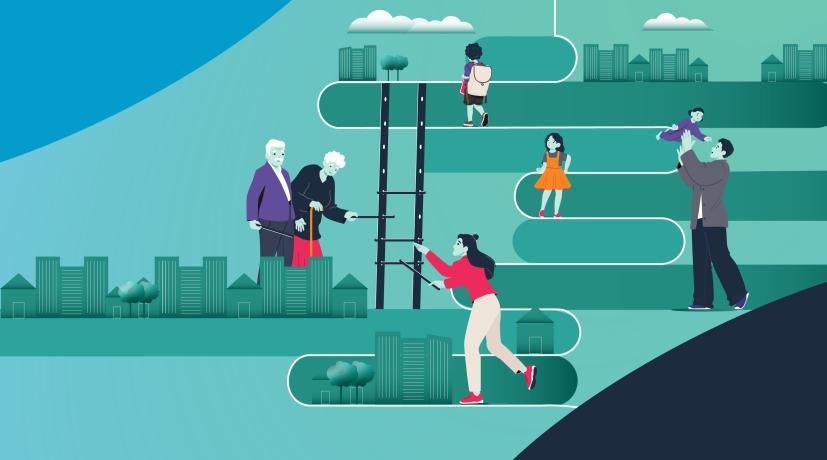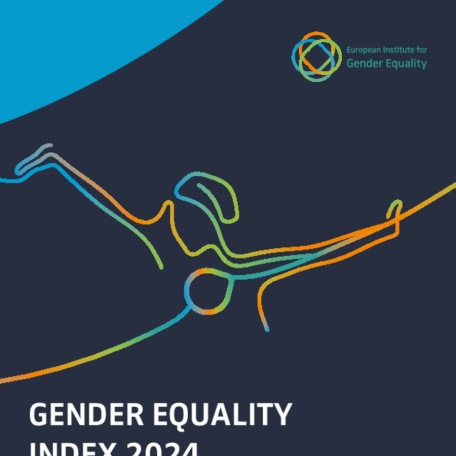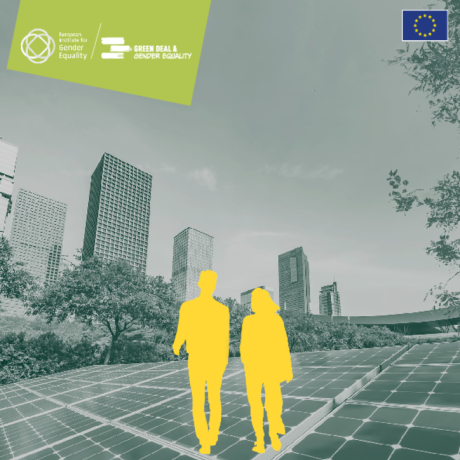
Hectares of newsprint and hours of screentime are dedicated to COP28. It’s little surprise as the calls for action on climate change and gender equality grow ever more urgent.
So, how can journalists cut through the noise? How can they report smarter, share the best information faster and tell stories that have a lasting impact?
“Good journalism is crucial for raising awareness,” says Dennis Van Der Veur, EIGE’s Head of Outreach and Engagement.
“Reporters have a responsibility to share messages of hope from COP28 and beyond. Positive well-told stories help increase participation while making new connections and coalitions.”
“EIGE can help surface hope-based stories through our research, evidence and ongoing support. Together we can start a conversation that helps create a cleaner, greener, gender-equal world.”
Ahead of this year’s UN Climate summit, we asked fellow communicators to share advice on how to write climate and gender stories that matter.
“You have to go the extra mile”, says journalist Ruby Haji Naif, a COP28 youth delegate who moved from Syria to Germany and is now studying for her PhD at Cambridge University.
Wallis Grant, gender lead on entrepreneurship at Amsterdam-based Climate KIC recognises: “Journalists are doing a tough job. Just having this kind of conversation is important.”
Experts identify the five rules for journalists passionate about truth, equality and climate justice.
- Embrace intersectionality
- Focus on system change
- Amplify unheard voices
- Humanise climate data
- Take a stand and be transparent
Now let’s explore each of these in detail. And then we would love to hear your thoughts on how to improve the conversation around gender and climate.
1. Embrace intersectionality
There’s no one-size-fits-all approach to reporting on gender and climate issues. As a journalist, it’s important to acknowledge and explore intersectional differences.
“Embrace a wider spectrum of identities,” says Dr Asmae Ourkiya, of Dublin’s Ecofeminist Institute.
“Move beyond the conventional male/female dichotomy and actively include voices from diverse communities that extend beyond Western-centric perspectives.”
Ruby adds: “Even when a newspaper’s editorial team acknowledge the need to increase success stories about women, they always seem to be about white women.”
“Minorities are often more vulnerable…It’s about trying to capture the stories of people from diverse backgrounds as much as you can.”
2. Focus on system change
While everyone needs to engage for environmental action and gender equality to happen, it’s important to prioritise system change in stories over individual impact.
“We focus on people, but what does the system tell us?” says Ruby.
“Writing about an amazing young woman participating in the system doesn't take into consideration the obstacles she’s overcome to ally with this process.”
Wallis continues: “When you talk to people about system change it often goes over their heads. So I try to tell the story of a system.”
“So, for example, a city encourages more electric cars. What needs to change for that to happen? Is the community on board? Are they comfortable with it? Is it affordable?”
“Then you start to tell the story of how one thing happening in a certain neighbourhood has ripple effects across the whole community. Follow the different paths of change.”
3. Amplify unheard voices
Journalists should invest time and effort in seeking out stories from people with diverse experiences. Focus on the obstacles they’ve overcome. And most importantly: listen.
“Incorporating a broader range of gender identities in your reporting contributes to a more inclusive narrative that reflects the true diversity of human experiences,” says Dr Ourkiya.
“Interview those in power, interview men and interview women and interview gender-diverse individuals who are really affected or actively involved,” adds Ruby.
“Go further to find different stories and people who don't have a platform. It takes a lot of time and effort. But we should listen to people more about their experiences.”
Wallis suggests that journalists “should ask especially for women” when looking for experts and interview subjects.”
“There are many networks that can help. Another trick is when someone is unavailable, ask for three more women rather than just asking for them to suggest anyone else,” she says.
4. Humanise climate data
Connecting with readers and audiences over climate and equality can be challenging. Telling a complex story involving science and big numbers simply demands extra effort.
“The data around gender and climate is so big and so stark, that we need to talk about it more. It's a powerful way to get people interested and invested,” says Wallis.
“Storytelling brings people in. But to actually get that wake-up call, you need the stats to help people understand the huge gaps that exist.”
Ruby continues: “Scientific language can be hard to understand. Speak in a natural way. You can always couple data with human stories.
“We have great knowledge. But most of the time it’s just a conversation amongst academics. Academic stuff on its own is useless. It should be accessible to everyone.”
5. Take a stand and be transparent
A journalist’s job is far more than reporting two opposing positions and saying that the truth lies somewhere in between. Transparency trumps everything.
“It’s OK to take a stand,” says Ruby. “This is especially true when it comes to the climate and equality that affects everyone.”
There’s an assumption that journalism needs to be neutral. But it’s fine to have an opinion, provided you are transparent and don’t claim to be neutral.
“You can say: This is my stance. This is the data. Then you can leave it up to the readers to make up their own minds. Assume that people have agency.”
Beyond this, all the experts we spoke to urged journalists to strive to tell authentic, positive stories in support of climate action and gender equality.
“By breaking free from the constraints of a binary gender framework, journalists will enhance the authenticity of their narratives,” says Dr Ourkiya.
“This nuanced perspective fosters a more accurate understanding of the complexity of diverse gender identities and the urgent challenges posed by climate change.”
“I understand there's a lot of anxiety and a lot of negative reporting. But believe it or not, there are a lot of positive stories and initiatives,” adds Ruby.
Wallis concludes: “Women are simultaneously going to be impacted more severely by the climate crisis, but they also have the knowledge, expertise, and tools to be agents of change.”
“There’s a lot of doom and gloom. That might be the stark reality. But I think a lot of people are starting to be turned off by it. It makes you feel hopeless. And without ideas.”
“We need to start thinking about not what we're going to lose, but what we're going to gain in a climate-just future. It's not about being upbeat. It's about showing solutions are possible.”
Do you have advice you would like to share to help others improve their reporting of gender and climate issues? We’d like to hear from you.





